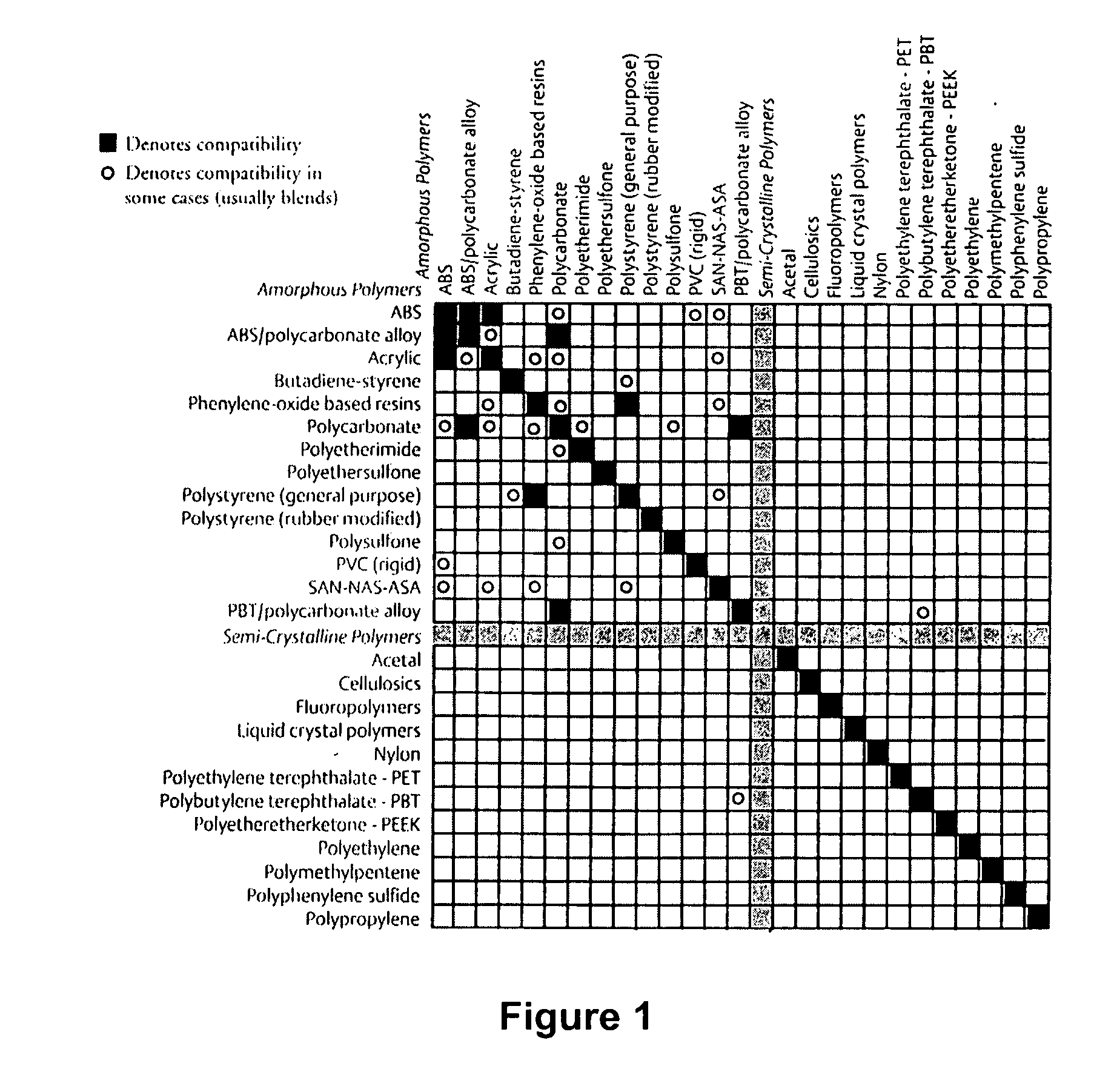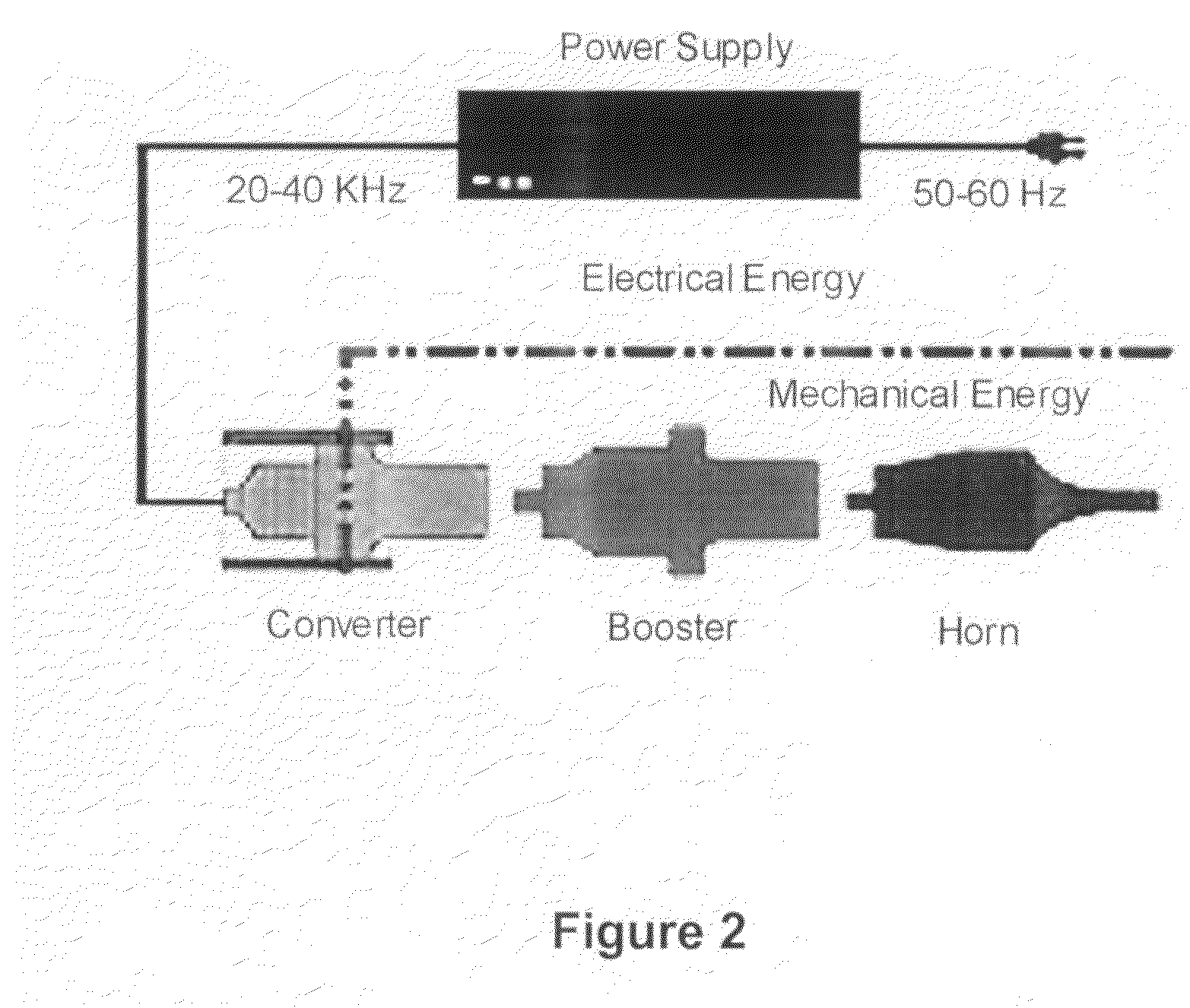Adaptive continuous acoustic welding system for incompatible materials
a continuous acoustic welding and incompatible material technology, applied in the direction of controlling lamination, process and machine control, mechanical control devices, etc., can solve the problems of inability to utilize ultrasonic welding technology, creating a union between the actual materials being bonded, weakness and porosity limitations
- Summary
- Abstract
- Description
- Claims
- Application Information
AI Technical Summary
Benefits of technology
Problems solved by technology
Method used
Image
Examples
Embodiment Construction
[0015]A system and method according to the invention enables the welding of materials normally considered incompatible in traditional ultrasonic welding techniques. Referring to FIG. 1, there is shown graphical representation of compatibility of various thermal plastics when subject to conventional ultrasonic welding methods. Traditional ultrasonic welding techniques require that the materials to be welded exist in compatible groups. Materials from incompatible groups are not able to utilize the classical technique of ultrasonic welding.
[0016]Compatibility is defined as and materials are compatible if they allow for complete mixing of the materials resulting in a homogeneous bond being formed. Weldability of thermoplastics is affected by a number of factors including but not limited to polymer structure, melt temperature, melt index or flow, modulus of elasticity or stiffness and chemical make up. A more detailed description of these factors is know to those skilled in the art of th...
PUM
| Property | Measurement | Unit |
|---|---|---|
| acoustic energy | aaaaa | aaaaa |
| pressure | aaaaa | aaaaa |
| interface temperature | aaaaa | aaaaa |
Abstract
Description
Claims
Application Information
 Login to View More
Login to View More - R&D
- Intellectual Property
- Life Sciences
- Materials
- Tech Scout
- Unparalleled Data Quality
- Higher Quality Content
- 60% Fewer Hallucinations
Browse by: Latest US Patents, China's latest patents, Technical Efficacy Thesaurus, Application Domain, Technology Topic, Popular Technical Reports.
© 2025 PatSnap. All rights reserved.Legal|Privacy policy|Modern Slavery Act Transparency Statement|Sitemap|About US| Contact US: help@patsnap.com



